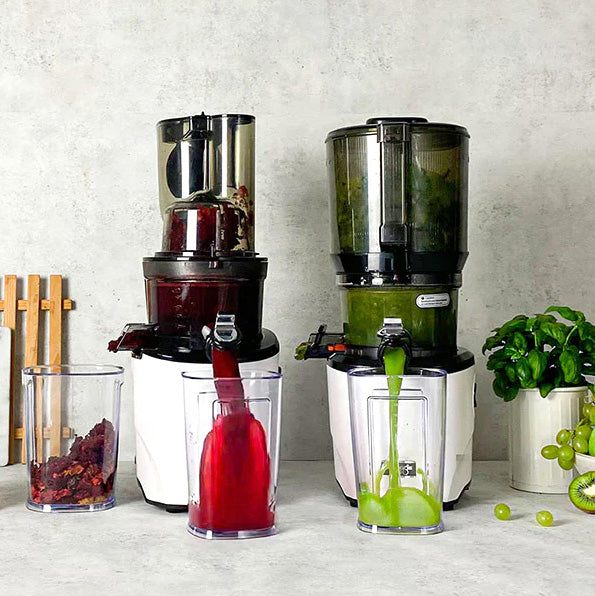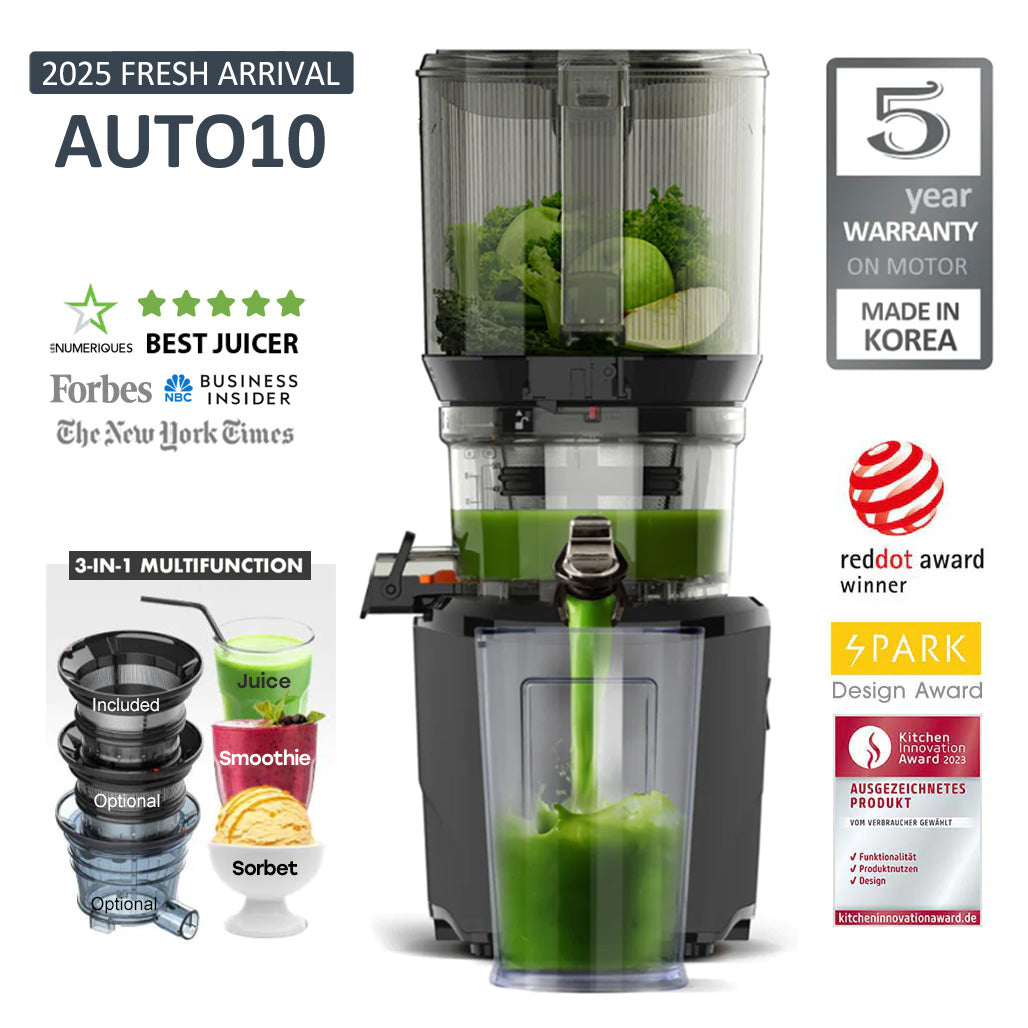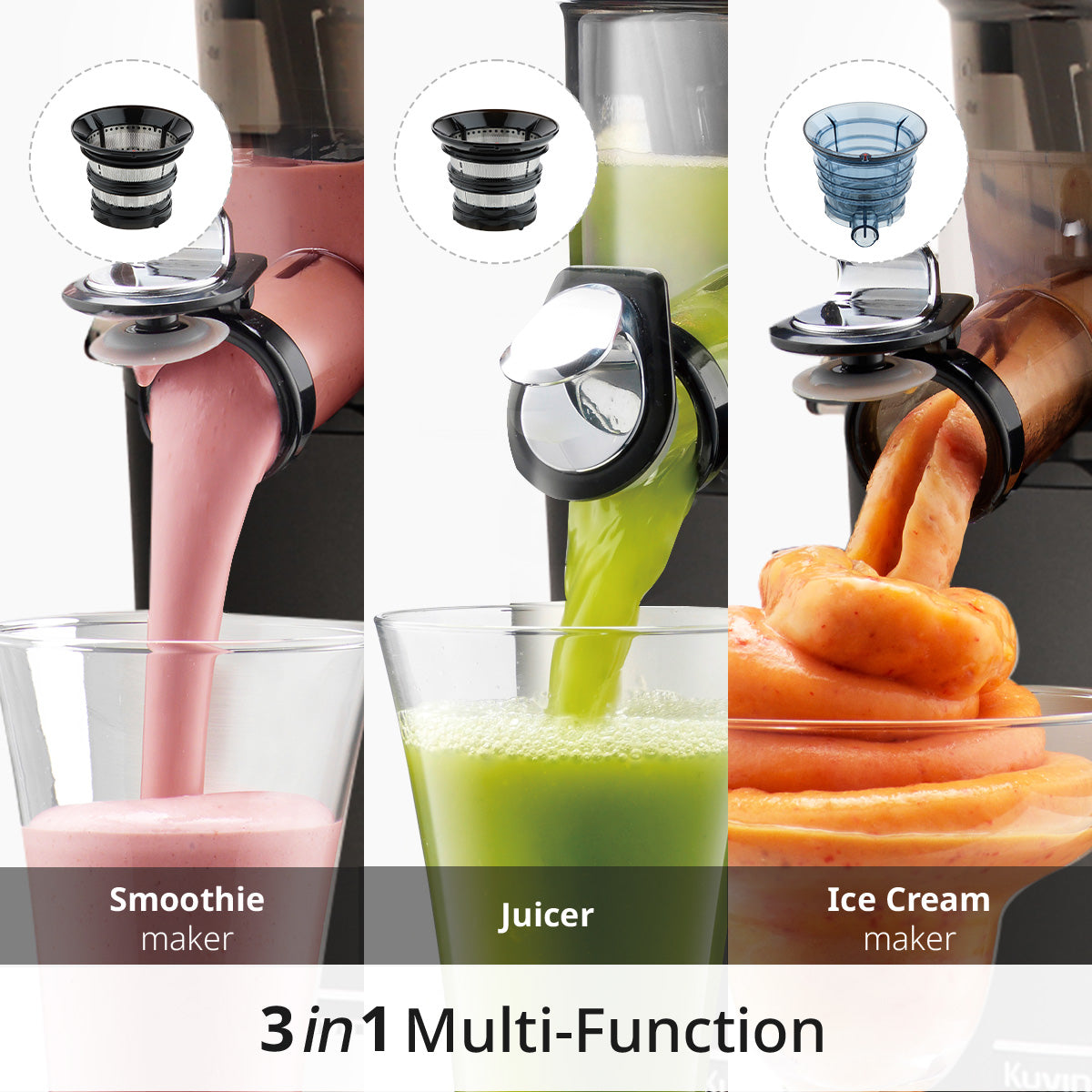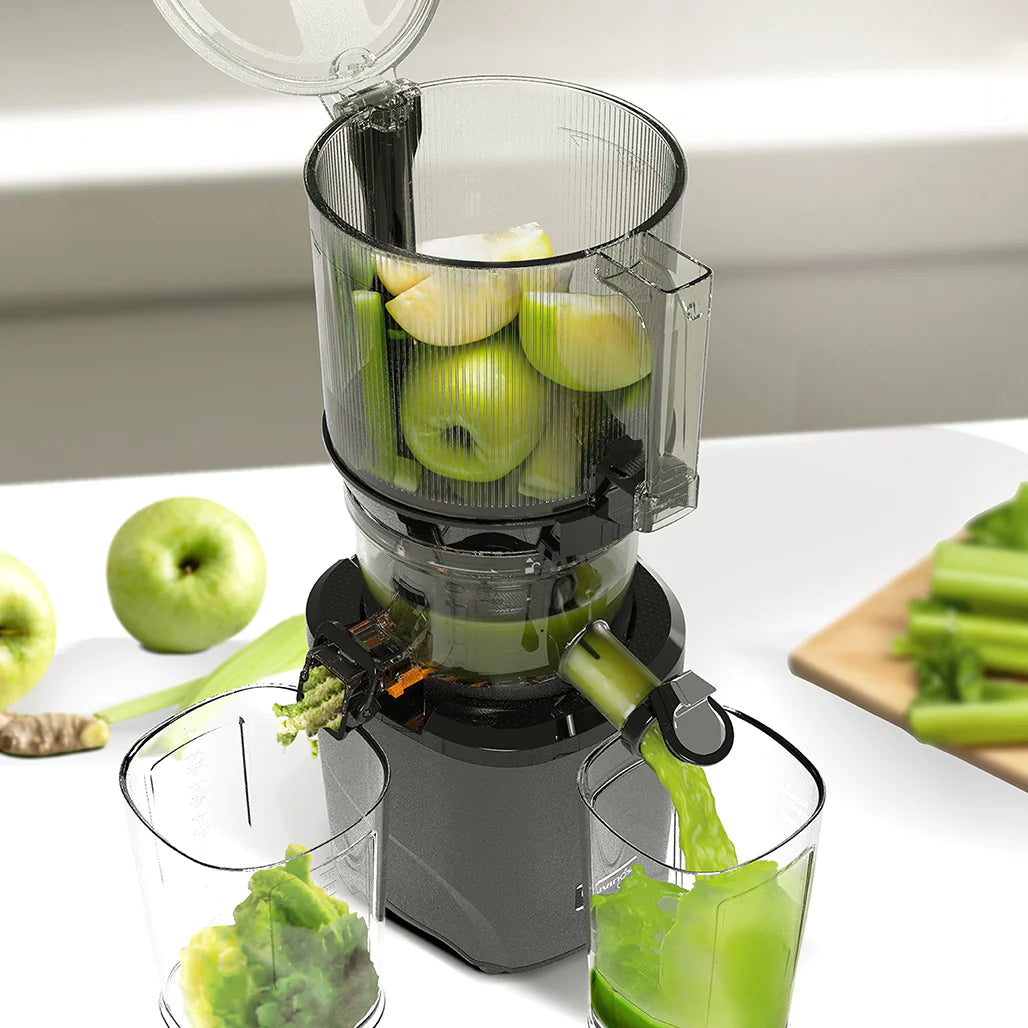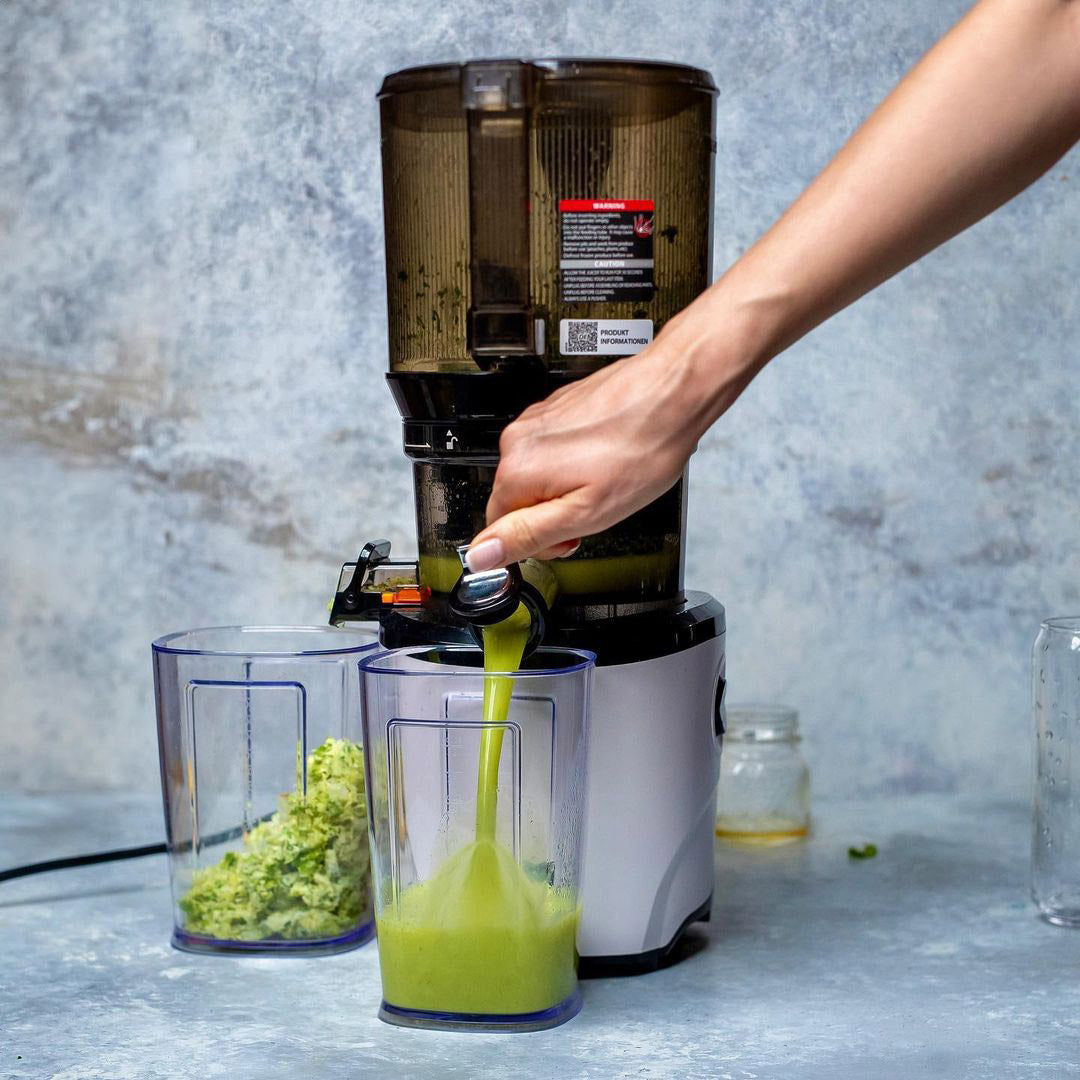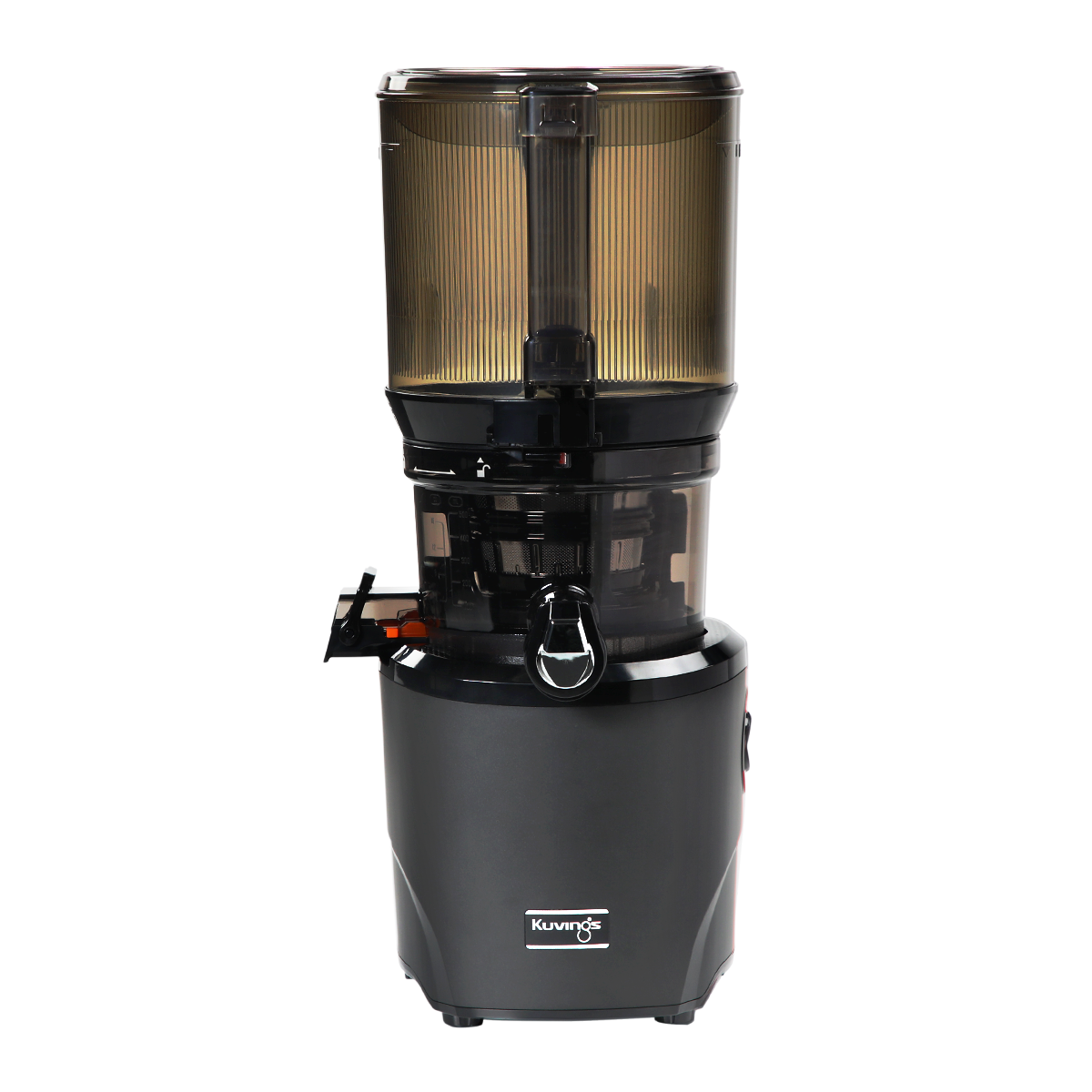When you take a sip of plant-based milk from the grocery store, did you know you’re also ingesting sweeteners, thickeners, oils, preservatives, and other additives? And the small selection of brands that use pure ingredients can cost a pretty penny.
The good news is, making homemade plant milk is surprisingly simple with the help of your Kuvings slow juicer.
In this guide, we’ll cover:
- Nut milk
- Oat milk
- Soy milk
- Seed milk
- Flavoring your milk
- What not to “milk”
Your homemade milk can be enjoyed straight from the juicer or strained to your liking (simply place a strainer over the juice cup as you make the milk).
Most plant milks last about 3 days airtight in the fridge, but trust your eyes and nose to detect spoilage.
NUT MILK

To make homemade nut milk, you’ll need to soak the nuts overnight in the refrigerator, or at least 8 hours. Drain. Then, juice them with fresh filtered water.
The ratio of nuts to water is typically 1:1 (equal parts nuts and water). However, the amount of water can be decreased for a creamier milk or increased for a lighter milk.
Instead of plain filtered water, try using coconut water for extra flavor and electrolytes. You can also combine different nut varieties to make one milk.
Types of nut milk you can make with your Kuvings slow juicer:
- Almond Milk - You can either remove the almond skins after soaking or keep them intact.
- Cashew Milk
- Hazelnut Milk
- Pecan Milk
- Macadamia Nut Milk
- Brazil Nut Milk
- Walnut Milk
- Pistachio Milk
OAT MILK

Perfect for those with nut and soy allergies, oat milk is a creamy milk alternative high in heart-healthy soluble fiber. Oat milk is best when used in cold drinks, as it can separate in hot beverages.
Oat milk has a tendency to become slimy or gummy if not juiced correctly. Key steps to prevent this: be careful not to over soak the oats, use ice-cold water throughout the milk-making process, and rinse the oats well before juicing.
If you’re using steel cut oats, soak one cup of oats in water and place in the refrigerator overnight. Drain and rinse well with cold water (this step is important) then juice with 1 cup of cold water.
If you’re using rolled oats, soak 1 cup for 2 hours, drain and rinse well, then juice with one cup of cold water.
SOY MILK
Soy milk is thick, cholesterol-free, and high in protein. Unlike other types of plant-based milk, it must be cooked before consumption. You can choose to either peel or leave the soybeans unpeeled after soaking.
SEED MILK
These lesser-known plant milk varieties deliver their own unique benefits. Pumpkin seed milk is rich in magnesium (which supports heart and bone health), antioxidants, iron, and zinc.
Hemp seed milk contains all 10 essential amino acids, as well as protein and healthy fats. After making hemp seed milk, be sure to store any remaining hemp seeds in the refrigerator to keep them fresh.
FLAVORING YOUR MILK
Another reason to make dairy-free milk at home is experimenting with fun flavors.
- Strawberry - Add fresh strawberries to the juicer in between scoops of nuts/oats/seeds and water.
- Dates - Soak 1-3 pitted dates with the nuts/oats/seeds and juice them along with the other ingredients.
- Maple syrup, agave, honey, cane sugar - Add to the final product.
- Vanilla - Vanilla bean: soak 1 bean pod with the nuts/grain/seeds and juice along with the other ingredients. Vanilla extract: add about a teaspoon to the final product.
- Cinnamon - Add to the final product.
- Cocoa or cacao powder - Add to the final product.
- Salt - Add a pinch to the final product. Pink Himalayan or sea salt is preferred, but table salt will work fine as well.
WHAT NOT TO “MILK”
- Rice - Juicing rice can damage the juicer, even when it’s been soaked. You can, however, make rice milk using a high speed blender.
- Coconut - Unfortunately, coconut meat is too tough to be gently pressed into milk.



